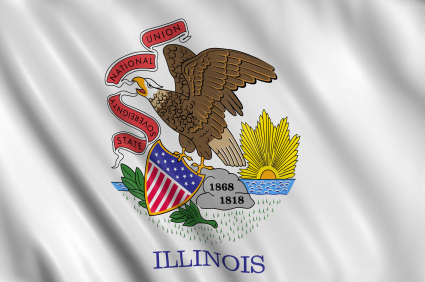Illinois Car Insurance
Illinois car insurance requirements change depending on what coverages you initially purchase.
| State Regulator Information | 866-445-5364 | www.insurance.illinois.gov |
| Insurance Premium | Avg. Annual Premium: $ 1,159 | National Average: $1,318 |
| Mandatory Car Insurance Coverage | Bodily Injury Liability:$20k/40k Property Damage Liability: $15k |

The state where liability coverage is required, but the coverage to protect you is only half required.
Not only do you need liability coverage for other people you may hit, but Illinois car insurance laws also require that you carry insurance coverage to protect yourself. However, all of their insurance requirements are not as simple as they are in other states.
Illinois Car Insurance Liability Minimums
The minimum liability insurance allowed in Illinois is $20,000 for one person and $40,000 for multiple people. For any damage that you do to the property of others, $15,000 is required in coverage.
Illinois Car Insurance UM/UIM Minimums
Bodily injury liability coverage and property damage liability coverage make up only half of what is required to drive legally in Illinois. The other half of the requirements are Uninsured motorist and underinsured motorist coverage.
Uninsured motorist (UM) is used when another driver with no insurance hits you and you are injured. You can carry no less than $20,000 per person and $40,000 for the total accident with UM coverage. In order to be able to use this coverage the other driver has to be at fault for the accident or the accident has to be from a hit-and-run driver.
Underinsurance motorist coverage (UIM) is only required if you purchase more than the minimum limits required for UM.
UIM is for when you have more medical bills than the driver that was responsible for the accident has in liability coverage. For example, if your medical bills were $60,000 and the other person only had $40,000 in bodily injury liability coverage; the UIM could be used to help pay for the remaining $20,000 still left over.
Mandatory Illinois Insurance Coverage (For Insurance Companies)
Yes, even the insurance companies are required to have mandatory insurance by the state; but not in the way you think. This mandatory insurance is in the form of being forced to provide insurance coverage to drivers in the state that can’t get insurance anywhere else.
These are the drivers that have had accident after accident that they were at fault for. They are also the drivers that have had so many traffic violations that only the state and the insurance companies have been able to keep track of the count. In other words, these are the bad drivers that insurance companies don’t want to have to provide insurance for.
Because insurance is mandatory in Illinois, if you have become this type of driver you are only going to be able to find insurance coverage through the Illinois Automobile Insurance Plan. However, there are requirements to get into this program as well:
• The vehicle you drive has to be mechanically and legally safe to drive.
• You have to have a valid driver’s license or can apply for one (your license can’t be suspended).
• You cannot owe any insurance companies money for insurance you had in the last 36 months.
• You have to have been turned down by other insurance companies when you applied for car insurance with them.
If you are able to get insurance through the Illinois Automobile Insurance Plan, expect to pay a very high premium for insurance. If you don’t meet the requirements of this plan and can’t get Illinois car insurance anywhere else, you need to stop driving!



